Christine Valters Paintner's Blog, page 93
April 21, 2018
Way of the Monk, Path of the Artist ~ A Love Note from Your Online Abbess
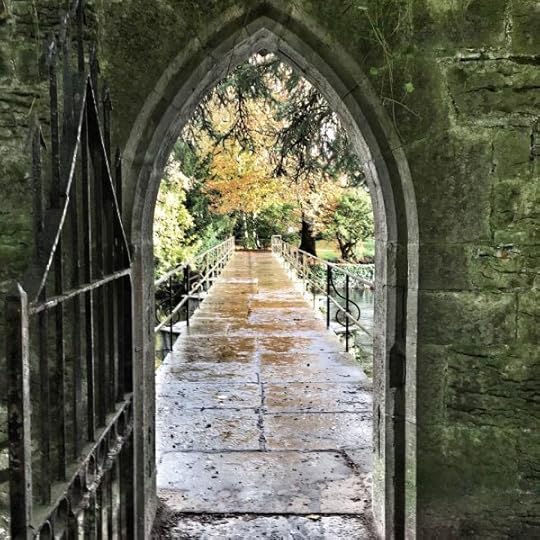 Dearest monks and artists,
Dearest monks and artists,
Like many of you, global events lately feel quite overwhelming at times and I ponder and pray about my response. One thing I keep coming back to is a sense of deep certainty that the way of the monk and path of the artist make a difference in the world. What distinguishes these two ways of being is that each are called to live deliberately on the edges of things, in active resistance to a world that places all its value on speed and productivity, that reduces people to producers and consumers, and reduces the earth to a commodity for our use.
The longer I follow this path in my life, the more I consider hospitality to be one of the most essential of all the monk’s wisdom. To practice actively welcoming in what is most strange or other in my world as the very place of divine encounter – what St Benedict tells us in the Rule – is a holy challenge! But in a world where otherness sparks so much fear and policies which further divide us, learning to embrace the gift of the stranger, both within our own hearts, as well as in the world is a true balm.
This is what Jesus taught as well through his actions everyday – welcoming the outcast, the stranger, the foreigner. Always breaking boundaries to witness to immense love over fear.
Perhaps the other great essential for me is the practice of silence and solitude. Making time for a deep listening, rather than reacting to what we hear. What are the sacred invitations being whispered in quiet moments? And can we resist a culture of noise where we are bombarded with endless cycles of news.
In her book Mystical Hope, Cynthia Bourgeault writes that "(Mystical hope) has something to do with presence — not a future good outcome, but the immediate experience of being met, held in communion, by something intimately at hand." Allowing time to feel met by the divine and held in communion is a reminder for us as we return to the demands of our lives and seek to make wise and compassionate choices. It helps to nourish hope deep within us.
In my book The Artist’s Rule, I include a favorite scripture passage:
Now I am revealing new things to you, things hidden and unknown to you, created just now, this very moment. Of these things you have heard nothing until now. So that you cannot say, Oh yes, I knew this. (Isaiah 48:6-7 – Jerusalem Bible translation)
It is a reminder that more than ever we need people willing to pause and listen, to open their hearts to what is uncomfortable, and to hold space and attention until the new thing emerges.
I don’t have the answers, but I do have ancient practices which help to sustain me when I would rather run away. Perhaps if we keep practicing together, we will hear whispers of a new beginning.
(We are starting an online journey in community through my book The Artist’s Ruleon May 28th, you can join us at this link).
With great and growing love,
Christine
Christine Valters Paintner, PhD, REACE
Photo © Christine Valters Paintner
April 17, 2018
Monk in the World Guest Post: Amanda K. Berg
I am delighted to share another beautiful submission to the Monk in the World guest post series from the community. Read on for Amanda K. Berg's reflection Surrender and Gratitude.
"Surrender and Gratitude"
– St. Therese Lisieux
As the wheels of the plane touched ground in Los Angeles, that place in the deepest part of my gut awakened. You know that place too. It is the place that comes alive when you experience a sense of loss, like losing a loved one or ending a relationship. It comes alive when you realize that you are lost, like a child in the grocery store that went over a few aisles too many, and panic sets in because they are not sure of which way to go. It comes alive with new beginnings, like starting a new job, a new school, or a new season in life. It is that space deep down within you that is sending a signal that something is shifting in your universe- something that will require your whole self to take note, and is not going to be easy.
After living five, life-giving, green years in Ireland, my family and I returned to Southern California. Repatriation had begun, and I wasn’t ready. The year we left, 2011, marked the year California began to experience one of its worst droughts on record. Upon our return in 2016, we found ourselves in the midst of it. All was brown. There was an eerie lifelessness in the air. The trees in our town looked as if they were barely holding on, pine straw and bark had replaced the once green lawns of our parks, and residential lawns were brown except for the few bright green patches of fake grass which looked a bit forced, awkward, and out of place. Our lawn was no exception. Patches of dirt had emerged where green grass had once been, and a thirty-year-old beautiful Birch tree in our back yard was dead. Our hearts sank.
The first few months I found myself limping along. I distracted myself by reconnecting with old friends, working on our house, and reacquainting myself with life in America. But much like the parched landscape, I felt dried up.
Before I left Ireland, I was finishing up my course in Spiritual Direction, and in my readings, came across this from the 19th Century Carmelite nun, St. Therese of Lisieux, “Jesus does not demand great actions from us, but simply surrender and gratitude.” Surrender and gratitude; I keep coming back to these words again and again.
For me, the practice of “surrender and gratitude” sets a framework for my spiritual journey that yields gentle peace and soft joy. I believe they are good companions for all of us. The paths we walk are a mixture of the barren and the abundant, the delightful and the dangerous, the smooth and the rough, the peaceful and the chaotic. With surrender and gratitude alongside us, these paths become sacred paths of discovery about God, others, and ourselves. God calls us toward a deeper love, to walk these sacred paths together with God and others. When we intentionally practice surrender and gratitude in our lives, we can more earnestly say with Julian of Norwich, “All shall be well.”
Many days, I still feel like I am limping along, but I know that one day my limping will turn into dancing, and then, one day, I will be limping again, and so it goes. But what I am discovering, ever so slowly, is that with surrender and gratitude as my companions, my rough edges are a bit smoother, my heart is a bit lighter, and whatever bits I can offer others is offered from that deep place inside. When my gut says change is upon me, I can welcome it and find gratitude peeking around the corner, and invite it to come over and fill this space of unknowing.
The most helpful image for me this past year has been the succulent plant. Soon after moving back to California, I noticed them everywhere. They have become the trendy “it” plant and I am grateful because it means that wherever I go, I see them. At the grocery store, on restaurant tables, at coffee shops, I see them. What I love about the succulent is that it has learned to adapt to the dryness gracefully. It is filled with sustenance to keep it going through the dry spells. It comes in lots of varieties and colors, radiates a simple beauty, and is smooth to the touch. It resists pests, and gives new life to the soil where it’s planted. It propagates new plants by simply letting a dry, unattached leaf that has fallen into the soil, take root and regenerate. It creates new beginnings wherever it finds itself, and sometimes, it even flowers and blooms.
And so, I planted a succulent garden and have placed two stones there that read, “Surrender and Gratitude.” Yes Lord, let it be so.
 Amanda K. Berg is a spiritual director, retreat facilitator, and speaker living in Southern California with her husband Eric, three daughters, and their little dog Gracie. After 22 years of raising her daughters, she stands on the threshold of seeing what’s behind the next door.
Amanda K. Berg is a spiritual director, retreat facilitator, and speaker living in Southern California with her husband Eric, three daughters, and their little dog Gracie. After 22 years of raising her daughters, she stands on the threshold of seeing what’s behind the next door.
April 16, 2018
Updates on 2019 Retreats & Pilgrimages – Join Us!
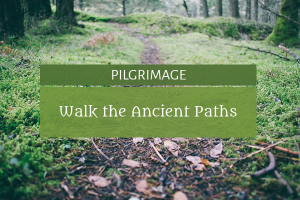 We are currently registering for four retreats and pilgrimages in Ireland next spring 2019.
We are currently registering for four retreats and pilgrimages in Ireland next spring 2019.
Please note: From June 2019-June 2020 the Abbey will be taking some sabbatical time and no live programs will be offered then. After the dates above, the next live programs will be scheduled in fall 2020.
Due to fewer programs being on offer the ones currently available are starting to fill even more quickly than usual. Please get in touch with us if you are interested in joining us! Happy to answer any questions.

March 26-April 3, 2019
Soul’s Slow Ripening – Monastic Wisdom for Discernment (Ireland)
Limited to 12 participants
For details and registration click here>>

April 14-19, 2019
Sacred Rhythms of Sky, Sun, Sea, and Stone:
An Embodied Writing and Voice Retreat on the island of Inismor (Ireland)
Limited to 16 participants
For details and registration click here>>

April 27-May 3, 2019
Writing on the Wild Edges on the Island of Inismor (Ireland)
Limited to 16 participants
For details and registration click here>> (Only five spaces left!)

May 28-June 5, 2019
Monk in the World Pilgrimage in Ireland (Ireland)
Limited to 12 participants
For details and registration click here>> (Only three spaces left!)

April 14, 2018
What is Blossoming Within You? (continued) ~ A Love Note from your Online Abbess
 Dearest monks and artists,
Dearest monks and artists,
This excerpt “Abundance and Hope” is from our reflective art journal What is Blossoming Within You? Years ago, when the Abbey was based in Seattle, we used to produce several of these volumes full of color photos, quotes, and reflections. Since moving, the physical copies are no longer produced, however you can download a digital copy for free at this link>>
The fertility of spring speaks of an abundantly creative God who is at the source of the potent life force beating at the heart of the world. Created in God’s image, we are called to participate in this generous creativity ourselves. Our own blossoming leads us to share our gifts with the world.
There is a playfulness and spontaneity to the season of spring, that invites us to join this joyful abandon. We are called to both listen deeply to the blossoming within ourselves as well as to forget ourselves — setting aside all of our seriousness about what we are called to do and simply enter the space of being. In this field of possibility we discover new gifts.
In the Hebrew Scriptures the promise of God’s abundance is often conceived of as blossoming in the desert. In that harsh landscape, a blossom bursting forth from the dry land is a symbol of divine generosity and fruitfulness.
Hope is never a denial of our pain and suffering. In hope we honor the whole spectrum of our human experience, the tension of blessing and curse. Hope is a stance of radical openness to the God of newness and possibility. When we hope, we name a God who has an imagination far more expansive than we do. It is in this wide landscape of possibility that hope is born.
Spring is the season when we are invited to celebrate the abundance of life. In this season of budding and blooming we are also called to notice our own places of abundance and scarcity as well as the places of fearfulness and hopefulness.
What are the elements of your life that feel most alive and vital? How are you called to nurture these more deeply?
What are the elements of your life that feel most life-draining, scarce, and fearful? How are you being called to hold these places lightly, offering them back to a God of abundance?
With great and growing love,
Christine
Christine Valters Paintner, PhD, REACE
Photo © Christine Valters Paintner
April 11, 2018
Monk in the World Guest Post: Johanneke Strydom
I am delighted to share another beautiful submission to the Monk in the World guest post series from the community. Read on for Johanneke Strydom's reflection "Wasting Time. . ."

I have this fear of wasting time… Not to do something worthwhile. Not to be able to show something for my time spent. Not to produce…I measure the success of my day in the things done to make the world a better place. Things produced… Beauty created. And the hours in between as wasted. Wasted with things like cooking and washing and reading and relaxing. The mundane. Nothing to show. What a waste!
We are brought up this way. To use our time well. This precious time we are given on this earth. To make every minute count, for the good. To act responsible. To use our talents. Not a moment to lose… All very good and noble.
But I get a sense in this, of a restless, hurried heart. Even frenetic. A kind of arrogance, seeing the self as so important, to get all these important things done. Driven.
And I wonder how much we miss along the way. Miss of the journey, the scenery, as we rush past? Past the moment, the now. Rushing past our fellow man…Past God?
But I don't get this sense of urgency when I read my Bible. When I read about Abraham waiting for the promise, he had to wait more than 20 years… And that man Noah, he worked and waited 100 years for that first rain to fall… I can go on. The Israelites in Egypt must have thought, after 400 years, forgotten and forlorn… And then Jesus. It seems as if He wasted a lot of time… When his good friend Lazarus was ill, He waited some more days, before going to him.
He was never too busy to tend to the needy, the sick, the children… Nothing too unimportant for His time.
I get a picture of Him as relaxed, unhurried…
Then I read His words in Mat 6:26: "Look at the birds, free and unfettered, not tied down to a job description, careless in the care of God. And you count far more than birds… "
Jesus says further in Mat 11: "Are you tired? Come to Me. I'll show you how to take a real rest. Walk with me and work with me – watch how I do it. Learn the unforced rhythms of grace. I won't lay anything heavy or ill-fitting on you. Keep company with me and you'll learn to live freely and lightly."
And I yearn for this: freedom and lightness… In my daily life.
And I come to see that it is not in the doing, but in the being, that we learn to live in His grace every moment. That time is His. That I cannot "waste" time that wasn't mine in the first place to take, to possess. I come to see that all of life to be sacred. Because I share it with Him. Every act becomes a small sacrament of love. Not wasted, but consecrated. To hang the washing against a blue sky, to cut the beans… Nothing wasted… Everything part of the whole. I can only pray: "Teach us to number our days, that we may gain a heart of wisdom."
And I ask the Spirit to teach me how to move at the pace of grace, rather than my own hurried, self-driven pace. To live an unhurried life. Connected deeply to the One who is rooted in Eternity…
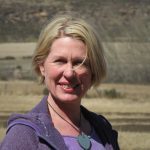 Johanneke Strydom is a fulltime artist who finds her inspiration in the natural world around her: rocks, trees, skies, hands and faces. She conducts creative retreats in her area and opened a creative centre for disadvantaged children and uses art to heal their emotional scars. She lives on a remote farm in South Africa with her farmer husband and 4 homeschooled children.
Johanneke Strydom is a fulltime artist who finds her inspiration in the natural world around her: rocks, trees, skies, hands and faces. She conducts creative retreats in her area and opened a creative centre for disadvantaged children and uses art to heal their emotional scars. She lives on a remote farm in South Africa with her farmer husband and 4 homeschooled children.You can find her on her website: johanneke.weebly.com
Please read carefully to continue receiving Abbey soul nourishment to your inbox.
Click here to opt in/out from Abbey emails
Dearest Monks, Artists, and Pilgrims,
This email was sent to our newsletter list, but in case yours got caught in the spam filter here are the details to stay on our mailing list.
You may be aware that on May 25th 2018, new Data Protection Regulations (GDPR) are coming into force in the EU. This means that we need to ask everyone on our email list (whether living in the EU or not) to opt in again to receive our communications.
If you would like to receive regular soul nourishment from Abbey of the Arts along with updates about our programs, please follow this link to remain on our email list. You have the choice to opt in for daily, weekly, or monthly emails or to have your details deleted from our system. You must choose one of those options to continue receiving emails.
Please opt in again as soon as possible as all emails will be sent out from the new list starting immediately. We will send a couple more reminders in coming weeks. If we do not hear anything back from you by May 24th we will be required to remove you from the list.
I know it is tedious to have one more thing to do arriving to your inbox, and we are deeply grateful for all of your support whether you are a new subscriber or have been following us for years. This is something required of us and we look forward to many more years of sharing inspiration, resources, and reflections with you.
We have recently updated our Privacy Statement to accommodate the new regulations, and to understand how Abbey of the Arts uses your personal information, you can find the updated version here. Essentially we never sell your details to other parties and you are free to unsubscribe at any time. Thanks for taking the time to read this and respond by clicking the button below.
With much love,
Christine
Christine Valters Paintner, PhD, REACE, OblSB
Abbey of the Arts
Click here to opt in/out from Abbey emails
April 7, 2018
What is Blossoming Within You? ~ A Love Note from Your Online Abbess
 Dearest monks and artists,
Dearest monks and artists,
This excerpt “Slowing Down” is from our reflective art journal What is Blossoming Within You? Years ago, when the Abbey was based in Seattle, we used to produce several of these volumes full of color photos, quotes, and reflections. Since moving, the physical copies are no longer produced, however you can download a digital copy for free at this link>>
It takes time to see. Around us the world is exploding in a celebration of new life and we may miss much of it in our seriousness to get the important things of life done.
Lynn Ungar has a wonderful poem titled “Camas Lilies” in which she writes: “And you—what of your rushed and / useful life? Imagine setting it all down— / papers, plans, appointments, everything, / leaving only a note: “Gone to the fields / to be lovely. Be back when I’m through / with blooming.”
You might begin this journey of reflection on blossoming by writing yourself a note of permission to set aside all of your useful and important tasks for a while and go out to the fields — at least in your imagination — to allow some time for your own blooming.
What is the busyness in your life that gets in the way of being able to really see the blossoming spring forth around you, both within and without? Can you name the hurriedness and distraction? How often do moments of beauty go by unnoticed in your life?
Alice Walker offers us an invitation to notice the colors of the world as a way to give honor to God, the creator of such beauty. You might consider making it a practice to notice one particular color in the day ahead and every time you see it, inhale its beauty and exhale to release your gratitude for the vibrant world that sustains us moment by moment.
With great and growing love,
Christine
Christine Valters Paintner, PhD, REACE
Photo © Christine Valters Paintner
April 3, 2018
Monk in the World Guest Post: Sophia Diehl
I am delighted to share another beautiful submission to the Monk in the World guest post series from the community. Read on for Sophia Diehl's reflection A Dance of Stillness.
Sometimes I go to a contact improvisation class to pray. As a dance student, trained to speak through the language of the body, contact improvisation allows me to enter into an intimate conversation with another person. Developed along with the rise of modern dance in the 1960s, this movement form requires a sharing of weight, a spontaneous giving and receiving with a dance partner.
In my prayer life, I find myself longing for response. When pouring out my desires and concerns, I want to be met with a tangible touch. Contact improvisation reminds me that all of my thoughts and actions are received. Far from shouting into a void, dance depends upon the presence of another person. Dancing with someone reminds me of that well-known insight of physics: “Every action has an equal and opposite reaction.” I also find that every action has a surprise.
In a recent contact improv class, I danced with one of the regulars. In the middle of our dance, he paused and asked me, “Can I give you some advice?” Bristled, but curious, I consented.
“You move too quickly,” he told me. “You’re always moving on to the next part of the dance, before we finish one moment.” He placed his wrist against mine.
“Stay with one point of contact for as long as you can. Then, trust that the next piece of the dance will emerge from there.”
My dancing transformed.
I tried what my partner suggested, remaining with one point of contact for as long as possible. This was complete presence. Meditation. The next phase of the dance always came. Before I knew what was happening, a hand to hand connection became a turn through the space, and our shoulders touching became a lift. My mind dropped into my body. I no longer made the dance happen; I allowed the dance to have me.
My partner’s unexpected advice has trickled into my dance with life. I am experience-hungry. I continuously reach for the next new place, new person, new situation. In the same way that I eagerly move through an improvised dance, my mind seems to live in the “next”of my life.
My new practice is one of staying. Last summer, I spent two weeks learning InterPlay, a movement improvisation system. The leaders engaged us in an exercise called shape and stillness. We simply held a shape with our bodies and changed that posture when desired. While I continuously shifted my body in and out of a multitude of positions, I noticed my friend holding one shape for the entire time allotted.
I was surprised by his gift for stillness and complimented him later. With a smile, he held out his hand to show me the bracelet on his arm. It read, “Stay.” He explained that his way of mindfulness required a willingness to sink into the present. To him, this practice of stillness was one of remaining in the present moment, even through discomfort.
At the time, I admired his commitment but couldn't get beyond the word “stay” as static and unchanging. How could I connect with the God of movement and flow by staying still?
Contact improvisation reshapes my experience of stillness. Steadily holding the moment creates freedom, rather than restricting it. If I allow myself to be completely interested in the simplicity of a touch, the next moment always arrives. In my eagerness to move onto the next part of the dance, I had forgotten my dancing partner. And in my desire to constantly move my life forward, I had forgotten God.
In this way, “Stay” has become my new mantra. When I hold a conversation with a person, I try to remain with their words for as long as possible, akin to squeezing every bit of juice from a lemon. I listen deeply and long. When I notice a moment of beauty in my walk through Seattle, I stay with the image for longer than feels comfortable, soaking in the color or the light of this particular instant. I hold eye contact with a passerby on the street for a few extra seconds.
Ironically, these choices to “stay” foster more movement in my life. In a recent conversation, I chose to sit and engage for longer than usual. My friend coaxed me through a much-needed insight, which allowed me to move through some confusion. My sense of time stretched out. When every moment is everything, I have nothing else to rush into.
This practice is a dance of trust. Trust in the fact that I am not the only being on this stage. This person I am speaking to has the wisdom to move our dialogue forward, and this flower I am gazing at knows where to take me next. Movement and stillness become one.
Life becomes more joyful when I realize that I have a dancing partner! I drop my own choreography and begin to move.
 Sophia Diehl studies Dance and Religion at St. Olaf College. She has a passion for integrating movement and spirituality. Sophia interned with InterPlay in Oakland, California and attended Art and Social Change. She has led InterPlay workshops throughout the United States and Australia, for chaplains, students, and faith communities.
Sophia Diehl studies Dance and Religion at St. Olaf College. She has a passion for integrating movement and spirituality. Sophia interned with InterPlay in Oakland, California and attended Art and Social Change. She has led InterPlay workshops throughout the United States and Australia, for chaplains, students, and faith communities.
March 31, 2018
Easter Blessings: Practicing Resurrection ~ A Love Note from Your Online Abbess
 Dearest monks and artists,
Dearest monks and artists,
Lent is a powerful season of transformation. Forty days in the desert, stripped of our comforts, and buoyed by our commitment to daily practice so that we might arrive at the celebration of Easter deepened and renewed.
But often, we arrive at the glorious season of resurrection and celebrate for that one day, forgetting it is a span of 50 days, even longer than the Lenten season through which we just traveled. Easter is not just the day when the tomb was discovered empty, but a span of time when days grow longer in the northern hemisphere, blossoms burst forth, and we are called to consider how we might practice this resurrection in our daily lives.
The soul's journey through Lent is like a pilgrimage exploring inner desert places, landscapes, thresholds, and the experience of exile. Ultimately, pilgrimage always leads us back home again with renewed vision. Resurrection is about discovering the home within each one of us, remembering that we are called to be at home in the world, even as we experience ourselves exiled again and again.
And perhaps there is no place of greater exile than what many of us experience in relationship to our bodies in this fast-paced consumer culture. We spend money on products to make ourselves more beautiful. We diet and fast and often go to extremes to try to mold ourselves to an external model of bodily "perfection." We seek out quick fixes through a variety of medications. Over and over again, we are sold a thousand ways to be unhappy with our physical beings.
The Gospel readings during the Easter season are about the resurrection appearances of Jesus, and many of them have to do with the life of the body: Thomas doubts and needs to touch Jesus' wounds; the nets are pulled ashore overflowing with fish; the disciples on the road to Emmaus recognize Jesus in the breaking of the bread; Jesus breathes on them the gift of the Spirit; and of course there is the celebration of breath and fire at Pentecost. In all of these stories, there is a sense of generosity and abundance, of caring for physical needs, and of finding solace and assurance in the wounds.
Beyond bunnies, baskets, chocolate, and jelly beans, Easter calls us to the profound practice of resurrection of the body. Lent calls us to the simplicity of ascetic practices like fasting with holy purpose. Easter calls us to the generous celebration of these bodies, which are such faithful companions.
Resurrection is about entering the fire of our passion and letting it burn brightly. It is about what enlivens us and makes us feel vital—releasing fear and anxiety over what is to come, and embracing this moment here and now. Resurrection calls us to experience the full weight and lightness of our physical being, to claim the beauty of our embodied selves, and to let gratitude for these vessels of aliveness overflow.
Imagine if, during the Easter season, we each took on practices like these:
Make a commitment to move slowly through the world, resisting the demand for speed and productivity that is tearing our bodies apart and wearing them down to exhaustion.
Reject compulsive "busyness" as a badge of pride and see it for what it is—a way of staying asleep to your own deep longings and those of the world around you.
Pause regularly. Breathe deeply. Reject multitasking. Savor one thing in this moment right now. Discover a portal into joy and delight in your body through fragrance, texture, shimmering light, song, or sweetness.
Let yourself experience grief for the vulnerabilities of your body. Be exquisitely tender with yourself and all of the aches and pains and limitations of embodied life. Make a space within to welcome in the sorrow of difficult memories.
Any time you begin to hear the old voices of judgment rise up about your body—whether self-consciousness or criticism or denial—pause and breathe. Then stand firm against those voices, as the desert elders counseled us to do, and tell them you will not offer them sanctuary anymore.
Play some music you love, and dance. Be present to the body's desires in response. Perhaps just a finger tapping at first. Then slowly let the impulse travel up your arm and across your chest, taking root in your heart, so that your dance might emerge from this place. Even just imagining yourself dancing can bring you alive.
Roll around on the grass, the way dogs do with abandon. Release worries about getting muddy or cold or looking foolish. The body isn't concerned with keeping things neat and tidy. Don't hold yourself back.
Every day, at least once, say thank you for the gift of being alive. Every day, at least once, remember the One who crafted you and exclaimed, "That is so very good."
Allow a day to follow the rhythms of your body. Notice when you are tired, and sleep. When you are hungry, eat. When your energy feels stagnant, go for a long walk. In truth, it often takes several days to sink into this kind of attunement, but begin to consider how you might invite this awareness into your daily life.
Be present to the earth-body, which is the matrix of our own being. The earth offers herself so generously for nourishment. Remember that earth-cherishing is intimately connected to cherishing your own embodied being.
What does it mean for us to not just say we believe in a resurrected life, but to truly practice resurrection?
Do you breathe in the gift of the Spirit? What will your practices of resurrected life be?
With great and growing love,
Christine
Christine Valters Paintner, PhD, REACE
Photo © Christine Valters Paintner
March 27, 2018
Monk in the World Guest Post: David LaBelle
I am delighted to share another beautiful submission to the Monk in the World guest post series. Read on for David LaBelle's reflection "A Visual Love Letter."

Florence, Italy March 2017 © Photo by David LaBelle
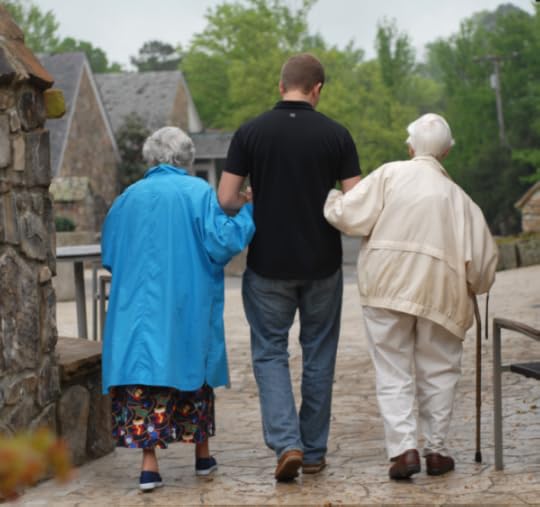

Florence, Italy – A woman helps a homeless friend sleeping at the train station. © Photo by David LaBelle
For 50 years, I have dreamed about photographing God.
In the past, I even kidded that when I died, I wanted my family to place a Nikon F camera loaded with 100 ASA film in the casket with me.
I figure I won’t need a fast film with a high ISO because there will be plenty of light, and I’d sure like to be the first to photograph heaven.
Indirectly, from the first days I picked up a camera, I have tried to photograph God by photographing His creation—be it the natural wonders of the world or the wonders of human creations.
Just as we photograph stunning rock formations in Utah, Arizona, Colorado or South Dakota—whose majestic cliffs have been shaped by countless years of breathing winds—we photograph an invisible God by photographing the influence of His Spirit on His creation.
Each of us carries the genetics—the DNA of our father.
I realize I must walk softly and carefully with this subject, and do so with sensitivity, recognizing there are many who do not share my beliefs. Please accept that this column is not meant to be a sermon, but a personal observation and ambition.
I do not mind admitting that when I witness humbling acts of altruism and love, my throat tightens and my eyes fill. In these quiet acts of compassion, I see my God every bit as much as when I behold a beautiful sunrise or sunset.
I have always been drawn to these genuine, not performed, moments. In them I see the goodness of mankind and the loving influence of God. In these mini stories, I feel the greatest joy and hope for humanity.
While some are drawn to photographing action sports, portraits or nature, I am drawn to quiet relationship scenes of love and compassion—things I often lack in my own life, but continually aspire to own.
My wife and I try to make pictures that reinforce the beauty and love of God on His creation, and try to avoid promoting the opposite.
For me, life looks very different at 65 than it did at 25. I’m confident it is a natural thing as we age to grow more introspective and more deliberate with what time we have left. In my youth, life was a smorgasbord and, like most, I wanted to sample everything.
I have loved many types of photography—from sports to nature, breaking news, celebrities and even some fashion—but lately, more than ever, my heart seeks to capture and share positive pictures that reinforce love and goodness and encourage hope, while glorifying our Creator.
It isn’t that I have not always tried to do this from the time I picked up a camera, but now with the acute recognition of the limited time I have left on this earth, there is an urgency not present 25 years ago.
I am forever reminded and keep this passage from Psalm 90 on the sleeve of my heart: “Teach us to number our days, that we might apply our hearts to wisdom.”
I photograph God when I record the golden morning light raking across the red earth or prairie grass of Oklahoma, or when evening clouds turn from white to yellow to crimson. I photograph God when I see birds drink the dew of the leaves or eat the crumbs left by man.
Mostly, I photograph God when I see His Spirit working in the lives of His children.
I don’t always love as I should, but often what I see through my lens challenges me to love more purely.
I wish every photograph I make to be a visual love letter to my God.
Originally Published in Ruralite Magazine https://www.ruralite.org/visuallove/
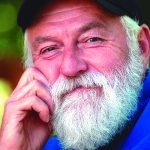 David LaBelle is an internationally known photographer, teacher, author and lecturer. He has worked for newspapers and magazines across the United States and taught at three universities. He applies many of the lessons he learned during his magical boyhood years in rural California to photography. For more information, visit www.greatpicturehunt.com.
David LaBelle is an internationally known photographer, teacher, author and lecturer. He has worked for newspapers and magazines across the United States and taught at three universities. He applies many of the lessons he learned during his magical boyhood years in rural California to photography. For more information, visit www.greatpicturehunt.com.



